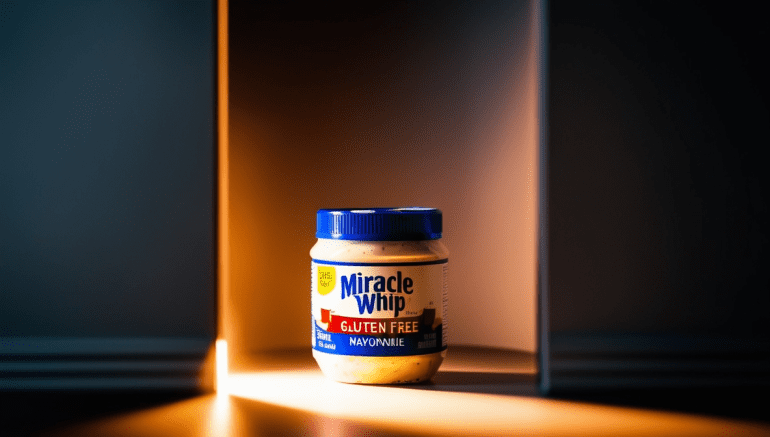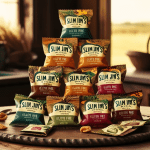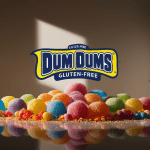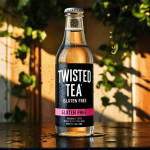Miracle Whip is generally considered gluten-free. Here’s a detailed overview based on the information available:
- Ingredients: Miracle Whip is primarily made from water, soybean oil, high-fructose corn syrup, vinegar, and various spices. None of these ingredients contain gluten. However, it’s important to check the specific product label for any updates or changes in formulation.
- Cross-Contamination Risks: While the ingredients themselves do not contain gluten, there is a potential risk of cross-contamination during manufacturing if the facility also processes gluten-containing products. This is particularly relevant for individuals with celiac disease or severe gluten intolerance.
- Labeling: Always look for a gluten-free label on the packaging to ensure that the product meets gluten-free standards. Some brands may also provide allergen statements regarding cross-contamination.
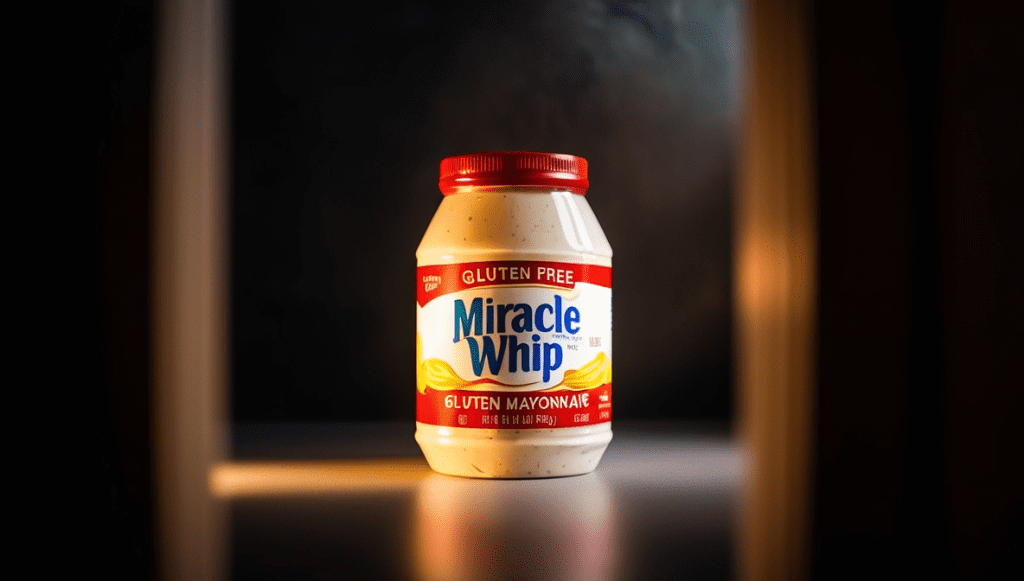
What Are the Ingredients in Miracle Whip?
The ingredients in Kraft Miracle Whip include:
- Water
- Soybean Oil
- High Fructose Corn Syrup
- Vinegar
- Modified Cornstarch
- Eggs
- Salt
- Natural Flavor
- Mustard Flour
- Potassium Sorbate (as a preservative)
- Paprika
- Spice
- Dried Garlic.
Are There Any Gluten-Free Alternatives to Miracle Whip?
Yes, there are several gluten-free alternatives to Miracle Whip:
- Gluten-Free Mayonnaise: Brands like Hellmann’s and Best Foods offer gluten-free mayonnaise that can be used in similar ways.
- Avocado-Based Spreads: These can provide a creamy texture with added health benefits.
- Homemade Dressings: You can make your own version using gluten-free ingredients, such as blending avocado, lemon juice, and spices.
How Does Miracle Whip Compare to Mayonnaise in Terms of Ingredients?
Miracle Whip and mayonnaise share some common ingredients but differ significantly in their formulation:
- Miracle Whip:
- Contains added sugar (high fructose corn syrup), which gives it a sweeter taste.
- Has less oil than mayonnaise, resulting in fewer calories (about 50 calories per tablespoon).
- Includes various spices and flavorings that contribute to its unique tangy-sweet flavor.
- Mayonnaise:
- Made primarily from oil, egg yolks, and an acid (like vinegar or lemon juice).
- Generally higher in fat and calories (about 94 calories per tablespoon).
- Typically does not contain added sugars or as many flavorings as Miracle Whip.
Is There a Gluten-Free Version of Miracle Whip Available?
As of now, Kraft does not specifically market a gluten-free version of Miracle Whip. However, the original formulation is considered gluten-free based on its ingredients. It is essential for individuals with gluten sensitivities to check the packaging for any allergen warnings related to cross-contamination during manufacturing.
What Are the Health Concerns Associated with Miracle Whip?
There are several health concerns associated with consuming Miracle Whip:
- High Fructose Corn Syrup: This ingredient has been linked to various health issues, including obesity and metabolic syndrome.
- Soybean Oil: Some studies suggest that soybean oil may contribute to inflammation.
- Additives: Miracle Whip contains preservatives like potassium sorbate and modified cornstarch, which some consumers prefer to avoid due to potential health impacts.
- Sugar Content: The added sugar makes it sweeter than traditional mayonnaise, which may not align with dietary preferences focused on reducing sugar intake .
In summary, Kraft Miracle Whip contains a mix of ingredients that include soybean oil and high fructose corn syrup, making it distinct from traditional mayonnaise. While there are gluten-free alternatives available, individuals should check labels carefully for cross-contamination risks if they have gluten sensitivities. Additionally, health concerns related to its additives and sugar content should be considered when incorporating it into your diet.
Miracle Whip is typically gluten-free based on its ingredients, but individuals with gluten sensitivities should check labels for any potential cross-contamination warnings. If you have specific dietary concerns, it’s advisable to consult the product packaging or contact the manufacturer for clarification.
